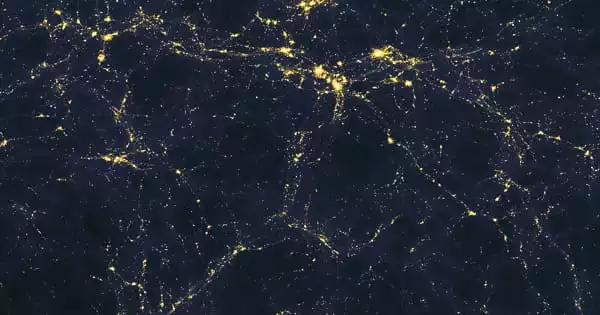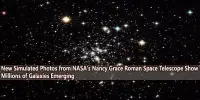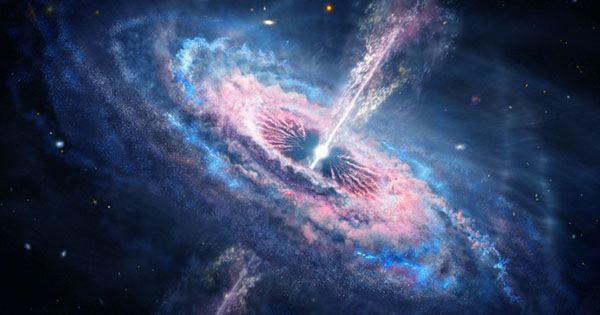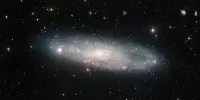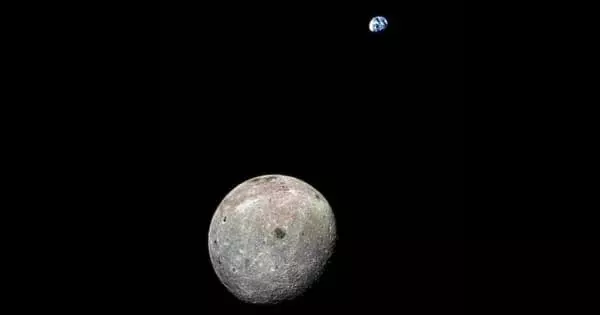The ‘Hercules-Corona Borealis Great Wall,’ found in November 2013, is the largest known structure in the Universe. This object is a galactic filament, a huge clump of galaxies held together by gravity and located approximately 10 billion light-years away. This galaxy cluster looks to be roughly 10 billion light-years across, which is more than double the previous record holder! Astronomers were able to calculate the structure’s size by measuring gamma-ray bursts from this collection of galaxies.
Moons, stars, and even entire galaxies do it. Now, two teams of scientists claim that cosmic filaments do it as well. These hundreds of millions of light-year-long tendrils whirl and twirl like huge corkscrews.
Cosmic filaments are the universe’s greatest known formations, containing the majority of its mass. These dense, narrow threads of dark matter and galaxies connect the cosmic web, channeling matter to galaxy clusters at the ends of each strand.
Matter did not rotate at the time of the Big Bang; but, as stars and galaxies formed, they began to spin. Until now, galaxy clusters were the biggest rotating formations known. “Conventional wisdom on the matter held that that was the end of the spin. On higher scales, you can’t truly make torques,” says Noam Libeskind, a cosmologist at Germany’s Leibniz Institute for Astrophysics Potsdam.
According to cosmological calculations, more than 60% of the hydrogen generated during the Big Bang is contained within these massive filaments. Previous research has also shown that where these filaments intersect, galaxies develop and are fueled by gas rivers.
Noam Libeskind
So the fact that filaments spin — at a scale that makes galaxies look like grains of dust — is perplexing. “We don’t have a complete idea of how every galaxy or filament gets to rotate,” says Mark Neyrinck, a cosmologist at the University of the Basque Country in Bilbao, Spain.
According to cosmological calculations, more than 60% of the hydrogen generated during the Big Bang is contained within these massive filaments. Previous research has also shown that where these filaments intersect, galaxies develop and are fueled by gas rivers. However, much of the evidence for the cosmic web has been circumstantial. Direct observations of these filaments have been difficult since the gas within them is scarcely observable. Now astronomers have directly detected the cosmic web with the help of intense light from young, star-forming galaxies.
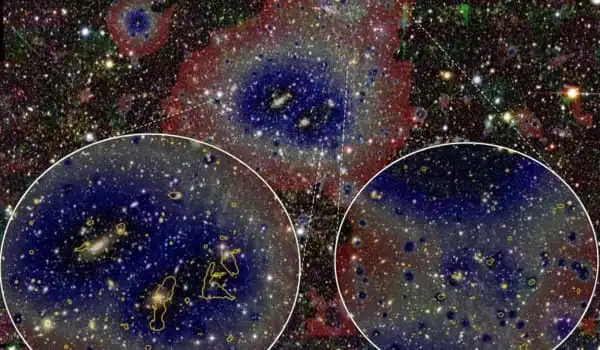
Neyrinck and colleagues utilized a 3-D cosmological simulation to assess the velocities of dark matter clumps as they traveled along a filament to test for rotation. He and his colleagues detail their findings in a paper published in the Monthly Notices of the Royal Astronomical Society in 2020 and currently in publication at arXiv.org. Meanwhile, Libeskind and colleagues investigated the possibility of rotation in the real cosmos, as reported in Nature Astronomy. The scientists used the Sloan Digital Sky Survey to trace galaxies’ movements and quantify their velocities perpendicular to filament axes.
The researchers identified and mapped light generated by hydrogen gas stimulated by ultraviolet rays from galaxies within the protocluster using the Multi-Unit Spectroscopic Explorer instrument on the European Southern Observatory’s Very Large Telescope in Chile. The equipment was created to scan large swathes of the sky for the weakest structures known.
In fact, this object is so large that it causes astronomers some difficulty. Modern cosmology is based on the idea that stuff should appear to be spread equally when examined on a big enough scale. Astronomers can’t agree on the exact scale, although it’s definitely smaller than the Hercules-Corona Borealis Great Wall. The huge distance also implies this object was in existence only 4 billion years after the Big Bang.
These filaments are almost certainly supplying gas to the protocluster. “They are thought to fuel the intense activity found in galaxies, such as star formation and the evolution of supermassive black holes,” Umehata explained. “As a result, our research contributes a critical piece to understanding how galaxies and supermassive black holes obtain their fuels.”
